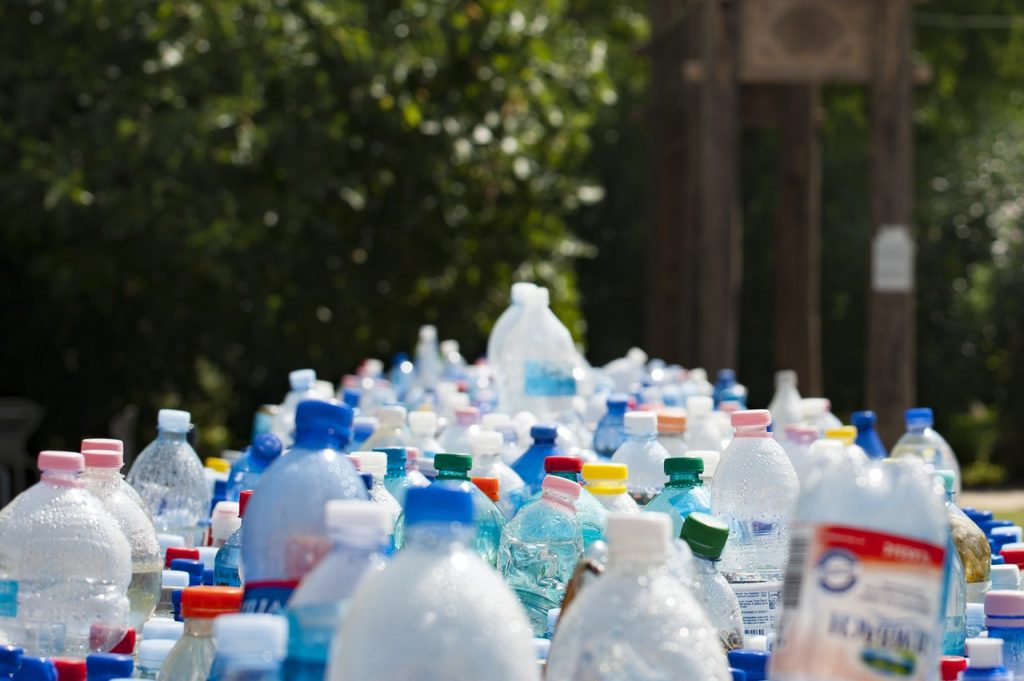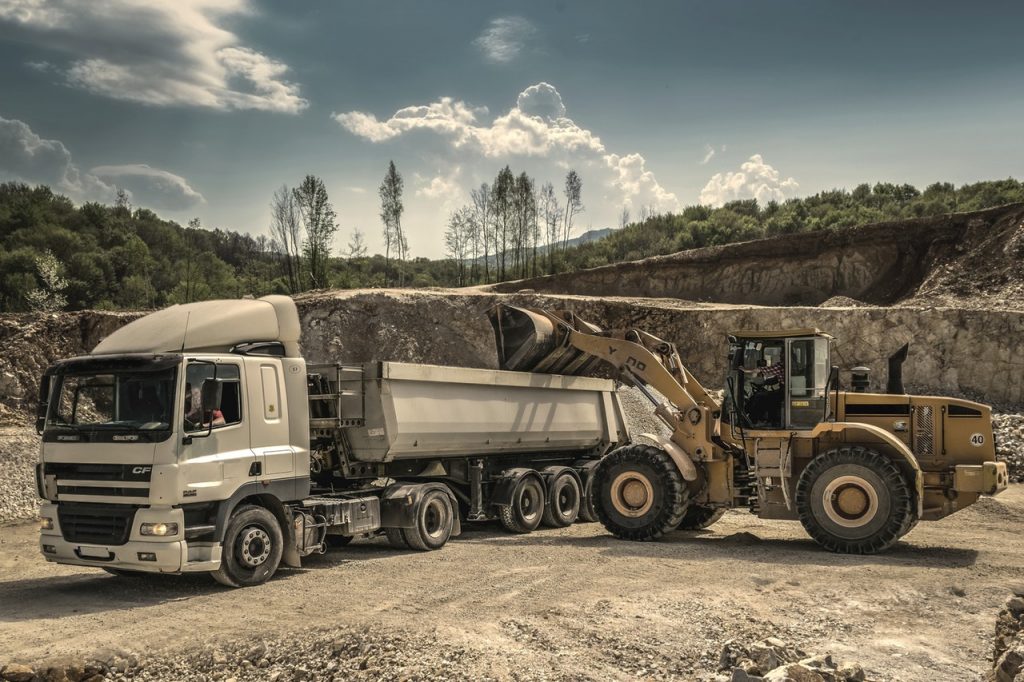Using renewable energy on a building site is one of the top priorities most most building companies this decade but, reducing the amount of waste created is the best eco-friendly and cost effective solution in helping the environment in the long term. The organization of these tasks easier maintained and controlled with the aid of a mobile job management system. Here are the top suggestions on how to maximize waste prevention on-site.

Plan deliveries
Waste created by inappropriate storage and weather damage can be lessened by “just-in-time” delivery techniques. Schedule materials delivery with the construction stages of the project. This will prevent longer than necessary storage time of materials on-site and reduce damage risks. Consider installing vehicle GPS tracking in real-time to ensure you are aware of potential delays. With the aid of business computer support, these functions can be integrated into your processes.
Material storage
Keep the protective packaging on and ensure storage areas are secure and weatherproof to reduce the degradation of materials
Emphasize the importance of best practice to site workers during safety briefings or tailgate meetings and use materials that have been damaged and wasted due to inadequate storage as examples to stress the urgency. Bring along a sample or a photograph of the damaged material during the discussion to prevent it from happing again.
Pay more attention to securing and protecting the materials especially when bad weather is forecast.
Avoid excess
Do not order considerably more raw materials such as concrete and mortar that can be realistically used before setting. Excess concrete can be set and crushed and used in paths and as road aggregate. Utilize mortar silos wherever possible. Can other uses be found for excess concrete? For example, make provisional kerb-stones to help direct traffic on-site.
Damaged materials
Materials not deemed fit to be used for the project after being damaged while in transit should be rejected and returned to the supplier for replacement. You don’t have to take responsibility for storing the damaged materials, which will soon add up to the waste.
Minimize materials movement
Lay out the storage plans of the bulk materials so that they won’t have to be moved around the site. This can help prevent breakage of the materials.
Eliminate excess packaging
For materials susceptible to weather damage, reject unnecessary packaging and ask the supplier to take them back. Examples of these are glazing racks, collation trays, plastic shrink wrapping, transport strapping, etc.
Check contracts with suppliers and the supplier’s haulier for the return of packaging. It is common for a supplier contract to include a clause for return of packaging but this is not included in the contract with their hauler. These issues should be identified and resolved as early as possible to prevent problems on-site.
Consider suppliers that offer reusable packaging schemes.

Return materials to supplier
Your suppliers may be able to take back their packaging – just ask. Reject and request the return to the supplier of:
- Excessive packaging of bulk items e.g. where plastic shrink wrapping is used in addition to metal / plastic strapping such as pallets of bricks or external hollow piping.
- Transport protective materials and strapping.
Re-using materials
Reusing materials should be considered as the next step if the material use and waste generation cannot be minimized. This can be done on-site or through a third party.
Deconstruction
Safety / security doors, timber hoarding, hand rails and other materials associated with temporary works should be fixed so they can be reassemble and re-used many times. Utilize mechanical fasteners such as bolts, screws and nails instead of sealants and adhesives. Steel mesh fence panels and other purpose-made reusable products for temporary applications may have a higher initial cost, but will be cheaper in the long term. Taking the buildings apart instead of knocking them down increases the amount that can be salvaged undamaged.
Plan in re-use
Phase the concrete pouring to allow re-use of shuttering on the remaining sections. Cut-offs can be collected and reused first instead of new materials.
Appropriately storage of the cutoffs is necessary to ensure that will not be damaged or degraded before they can be re-used.
Cut and fill quantities can be balanced on-site with proper coordination between phases of the project to ensure that material is available in the right quantities and at the right time.
Make best use of materials
Do not throw away unused and salvaged materials. Instead, return, sell or donate them. Collaborate with local charities and schools to see if they will support the proposal. These materials could be used in classroom lessons or for landscaping works. You can also include on-site staff in this process and make it personal to them to ensure ‘buy in’. Repair items (e.g. pallets) so they can be re-used or returned to the supplier. Undercoat or site hoardings can make use of mixed unused paints.
The Community Resources Network Scotland (CRNS) and the Community RePaint Network and other local re-use networks can help you fine outlets for materials re-use. You can also check Resource Efficient Scotland website, which hosts the Construction Material Exchange online.
Recycling waste
If waste cannot be reduced or re-used, the next option is to segregate the waste materials for recycling wherever possible. On-site separation is the most important step for recycling of construction waste. This will require extra effort and instruction of construction personnel, but once separation practices are established, on-site separation can be done at little or no additional cost and will save you money.
Material segregation
Sort different waste materials on-site.
Use waste containers of appropriate sizes to facilitate waste segregation and locate containers (e.g. skips or wheelie bins) close to working areas.
Effective segregation can be promoted if the waste containers are properly labeled.
To prevent confusion, use consistent labeling across all sites. Include images or materials icons on the labels to assist staff and sub-contractors who may not have English as their first language.
Coach staff on sensible ways to deal with and handle materials to get the most out of their re-use, recycling and recovery potential.
Keep hazardous wastes out of mixed waste skips. This reduces waste gate fees and increases the value of materials.
Consider sending your mixed waste to a Materials Recovery Facility (MRF) instead of a landfill if on-site segregation is not possible– the gate fees are often less.

Engage with waste contractor
Consult your waste contractor for assistance in recycling your waste products and seek out renewable energy sources. Shop around for the service that suits your site best. Should your site be experiencing congested drainage, CCTV pipeline inspections can be undertaken to find the problem at the source. Should any problems arise, drain cleaning services are an affordable solution. Skips for segregated materials can lead to cost savings and higher waste recovery rates compared to mixed skips, which are the most expensive option.
It is always preferable to separate out at on-site as much as possible, but where this is not feasible, discuss options with your waste contractor. Should you have a job management software, IT managed services can assist in implementing new processes into your project management system.
Your waste contractor may be able to sort your waste for recycling at their facility if space on-site is limited.
